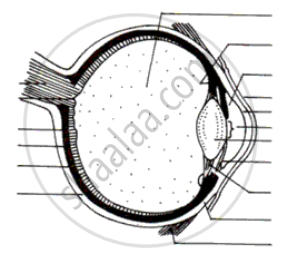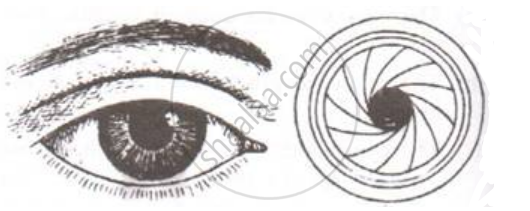Advertisements
Advertisements
Question
Sometimes you remember a vivid picture of a dream you saw. What is the role of your eyes in this experience?
Solution
The brain sees the vivid picture of the dream through the eyes. Our eyes have actually never seen the vivid picture. This is an example of optical illusion. The area of dream is controlled by the cerebrum of the central nervous system. So sometime we can remember the vivid picture seen in the dream.
APPEARS IN
RELATED QUESTIONS
The optical prescription for a pair of spectacles is :
Right eye : −3.50 D
Left eye : −4.00 D
Are these lenses thinner at the middle or at the edges?
Out of rods and cones m the retina of your eye:
which work in dim light?
What changes the shape of lens in the eye?
Give the scientific names of the following parts of the eye:
muscles which change the shape of the eye-lens.
Explain the functions of the following parts of the eye:
(i) cornea
(ii) iris
(iii) pupil
(iv) ciliary muscles
(v) eye-lens
A person got his eyes tested. The optician's prescription for the spectacles reads:
Left eye: − 3.00 D
Right eye: − 3.50 D
The person is having a defect of vision called:
(a) presbyopia
(b) myopia
(c) astigmatism
(d) hypermetropia
Out of animals of prey and predators, which have their eyes:
at the front of their head?
In what two ways is the yellow spot different from the blind spot?
The figure below compares a part of our eye with a part of a photographic camera.

Name the corresponding parts of the eye the camera shown here that are comparable in function.
State the main functions of the following:
Coronary Artery
Label the following diagram :

The figure below compares a part of our eye with a part of a photographic camera.

Explain the mode of working and the functions of the parts of the eye mentioned above.
The image of an object at an infinite distance is obtained in a real and erect form through a convex magnifying glass.
Write down the names of parts of the eye in the blank spaces shown in the figure.

Match the following
| 1. | Conjunctiva | a. | Coloured part of eye |
| 2. | Cornea | b. | Photosensitive layer |
| 3. | Iris | c. | Refraction |
| 4. | Retina | d. | Protection |
Match the following:
| Column - I | Column - II | ||
| 1 | Retina | a | pathway of light |
| 2 | Pupil | b |
far point comes closer |
| 3 | Ciliary muscles | c |
near point moves away |
| 4 | Myopia | d | screen of the eye |
| 5 | Hypermetropia | e | power of accommodation |
| Column I | Column II | ||
| 1 | Retina | a | Path way of light |
| 2 | Pupil | b | Far point comes closer |
| 3 | Ciliary muscles | c | near point moves away |
| 4 | Myopia | d | Screen of the eye |
| 5 | Hypermetropia | e | Power of accomodation |
Name the following:
Capacity of the eye to focus at different distances.
Give reason:
Blind spot is considered as 'area of no vision'.
With reference to human eye answer the question that follow:
Name the part of the eye associated with the regulation of the size of pupil.
